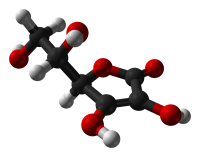Difference between revisions of "Why identical copying is unnecessary for foodsynthesis"
(section macroscale majorly improved) |
m (→Macro scale: moved todo into textbox below image) |
||
| Line 31: | Line 31: | ||
Making something where humans have a high tolerance for variation like all the various things made from dough and pastes like bread, cake and chocolate is likely rather easy. | Making something where humans have a high tolerance for variation like all the various things made from dough and pastes like bread, cake and chocolate is likely rather easy. | ||
In these cases the "irrelevancy gap" can be used for the creation of a wide varieties of novel qualities in food. | In these cases the "irrelevancy gap" can be used for the creation of a wide varieties of novel qualities in food. | ||
| − | |||
| − | [[File:Wellant-Apple.jpg|300px|thumb|center|Pictured here is a plain old Apple (a fresco apple to be specific).]] | + | [[File:Wellant-Apple.jpg|300px|thumb|center|Pictured here is a plain old Apple (a fresco apple to be specific). <br>{{todo|add image of a cake too}}]] |
=== Paste microprinted metamaterial apple like thing - MAYBE === | === Paste microprinted metamaterial apple like thing - MAYBE === | ||
Revision as of 18:20, 14 January 2017
With the term "food structure irrelevancy gap" here on this wiki we will refer to a size range in food in which human bodies do not care about the structure of the food. This is a size range where in the artificial synthesis of food there is the freedom to arrange the foods constituent molecules completely differently than the way they are structured in conventionally produced food.
Contents
The three size levels of food
Atomic scale
At the atomic scale a human body very much cares which chemical elements are included in the food and in which way atoms of these chemical elements are bond to one another. This is what makes food healthy tasty colorful and durable.
Micro scale
At the microscale the structure of food is pretty much irrelevant to a human body. These structures get destroyed early on in the digestion process or even earlier in the process of cooking. Also human senses can't perceive the fine details of the mechanical properties of the food (the foods texture) on this level. So there is no reason that motivates the replicating of inter-cellular structures in food meant for ingestion.
Attempting robotic mechanosynthetic pick and place synthesis of (necessarily deep frozen) the structures found in living cells seems extremely difficult or rather borderline impossible. More detailed discussion of this matter can be found ion the main page: (TODO: find appropriate title)
Macro scale
At the macroscale again we very much care for the makeup of our food. The "irrelevancy gap" on the microscale below the perceivable makroscale most likely opens up enough design freedom such that the mechanical properties (the texture) of food can be emulated sufficiently well such that the fake food perfectly fools human senses. (The principle of metamaterials applied on food). If faking food this way is desirable and acceptable or not is a separate matter. Faking something like an apple is likely pretty difficult. Making something where humans have a high tolerance for variation like all the various things made from dough and pastes like bread, cake and chocolate is likely rather easy. In these cases the "irrelevancy gap" can be used for the creation of a wide varieties of novel qualities in food.
Paste microprinted metamaterial apple like thing - MAYBE
Production of a "thing" that is indistinguishable from an apple for human senses by means of bottom up synthesis that does not rely on living cellular machinery (that is there are no cultivated cells involved) seems pretty difficult but not impossible. That is only if one does not insist on replicating any cellular structures but does some microscale "inkjet-pase-printing" like process instead. The resulting apple like thing thus would be very different from an apple on the for humans imperceptible microscale.
A perfectly replicated apple by putting every single presynthesized molecule in place ? - NO
If one does insist on replicating all the cellular structures by means of bottom up synthesis especially if one insists on replicating every little detail from some blueprint original (all the nooks and crannies of lipid membranes an how and where all the frozen water molecules lie - which is pretty silly) then this endeavor seems to move more into the realm of the borderline impossible.
Fake apple microprinted from Pre-cultivated cells - CERTAINLY
Production of a "thing" that is indistinguishable from an apple for human senses by means of microscale "inkjet-printed" of pre-cultivated living cells is probably easier than emulating mechanical properties by paste printing. The result could come actually close real apple even at the microscale. (Beside for food production this technique can be used for the production of living organs for transplantation.) Several of these fake apples compared to one another would look exactly identical on the macroascale but different on the microscale since cells have a lot of randomness in their growth patterns.
Related
In the synthesis of tissue for medicine there's no such irrelevancy gap.


